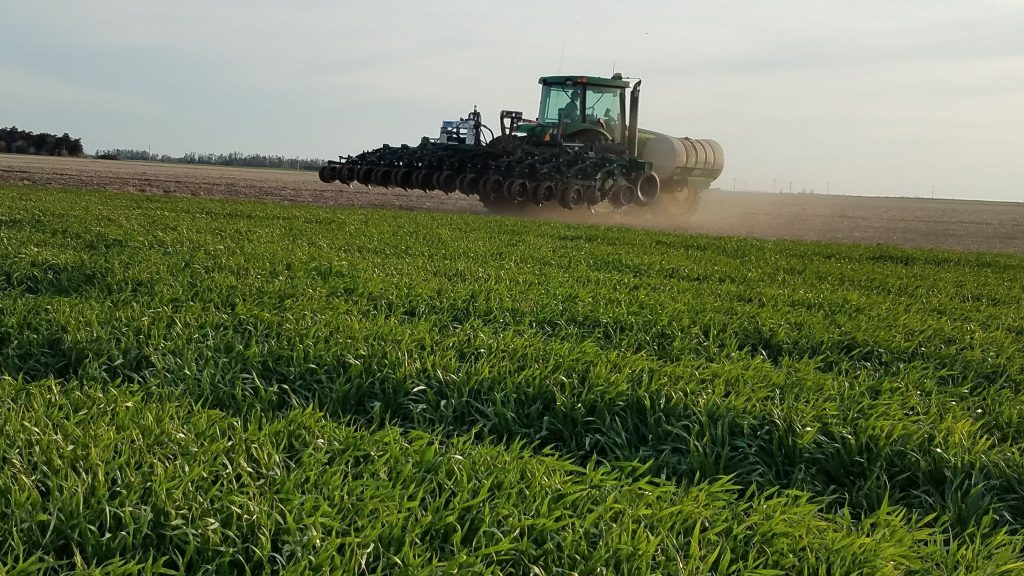
In a previous article, I reported that gasoline demand had plummeted to the lowest demand number in more than 50 years.
But the COVID-19 pandemic isn’t just impacting the nation’s refiners and oil producers. The U.S. is also subject to a Renewable Fuel Standard (RFS) which consumes most of the nation’s corn ethanol. The steep drop in gasoline demand has had a domino effect, also crushing the nation’s ethanol demand, and subsequently corn demand.
Many ethanol plants have shut down or reduced capacity, and that’s having additional impacts that may not be immediately obvious. For example, many ethanol plants produce and sell carbon dioxide as a byproduct. The U.S. meat industry uses carbon dioxide as a refrigerant, and suddenly finds itself scrambling to secure supplies. As Geoff Cooper, president of the Renewable Fuels Association recently stated “We’re headed for a train wreck in terms of the CO2 market.”
I spent some time this week discussing the economic impact on farmers with a friend, Kansas corn farmer Jon McClure. He took the picture at the top of the page from his tractor as he and his son Derek worked to get this year’s corn crop planted. From the cab of his tractor, he told me “The irony is that falling commodity prices are going to hit farmers and ranchers hard, even as prices surge further downstream. This is being caused by critical bottlenecks in the supply chain.”
To better understand the impacts of the COVID-19 impact on the food and ethanol producers in the heartland, I also spoke to Greg Krissek, the CEO of the Kansas Corn Growers Association, and Josh Roe who is Vice President of Market Development and Policy for the team.
Robert: Can you explain how the COVID-19 pandemic is impacting the country’s ethanol producers?
Josh: The decline in ethanol production represents an almost linear correlation with the decline in unleaded gasoline demand. Nationwide, 44 ethanol plants have idled production representing 3.6 billion gallons per year of production. Another 62 have reduced output rates 10% to 50%, representing another 1.7 billion gallons per year of production. Ethanol inventory levels are at the highest ever levels.
Greg: Although some plants have been redirected into producing hand sanitizer.
Robert: And this collapse in demand is on top of farmers already reeling from the financial impacts of the U.S.-China trade war?
Greg: Yes, we are still being impacted by trade war issues. Distiller’s dried grains with solubles (DDGS), corn, ethanol, and meat exports have all been impacted. For perspective, about 40% of Kansas corn left the state last year. Ethanol demand usually consumes about 38-39% of the corn crop, just behind demand for corn fed to livestock.
Josh: We are absolutely seeing a decline in corn demand. What we have seen is futures prices that are down about 15% since the pandemic impacts started. There has been a widening of the basis between future prices and local prices 20 to 30 cents. That has really negatively impacted cash prices on the ground. Right now we are projecting a 7% decline in corn demand for the year in what typically goes to ethanol production (which is around 3% overall).
Robert: I guess a lot of people would wonder if it’s possible to pivot to another crop.
Greg: Throughout the corn belt, if you don’t plant corn you usually plant soybeans.
Josh: But, we are right at the beginning of the planting year in Kansas. Farmers have already purchased seed and fertilizer. It’s too late in the game to change rotation. Most producers are locked in.
Robert: Beyond the demand issue, how else are the farmers being impacted by COVID-19?
Greg: The biggest concern has been that small operations like feed and fertilizer companies that may employ fewer than ten people have a plan in case someone becomes ill and has to be quarantined. A number of part suppliers and technology providers are trying to do as much as possible from afar before they have to come to the farm. There has been more reliance on remote work.
We are trying to minimize human interaction at grain elevators, ethanol plants, and feed lots. We recommend that interactions with strangers are more restrictive. There’s not much excess human capital in these grain farming operations. There is a 10-14 day window for planting, and it could be a real problem to be ill.
Josh: That covers most of the procedures. But I would add that most farms have only one or two people who are qualified to plant the crops. If they got sick during that planting window, it could have a drastic impact on their operation. Beyond that, they are relying on equipment for their operation, so if COVID-19 interrupts the supply chain of critical parts during the planting window it could have a major impact.
The biggest issue is just being prepared and educated about the risks. For that, we have put together a COVID-19 Toolkit to provide agricultural operations and those that support them the resources they need to better navigate this challenge.
Robert: Gentlemen, thank you for taking the time to help educate me on how COVID-19 is impacting our nation’s farmers, and on how you are coping with these challenges.
Follow Robert Rapier on Twitter, LinkedIn, or Facebook.